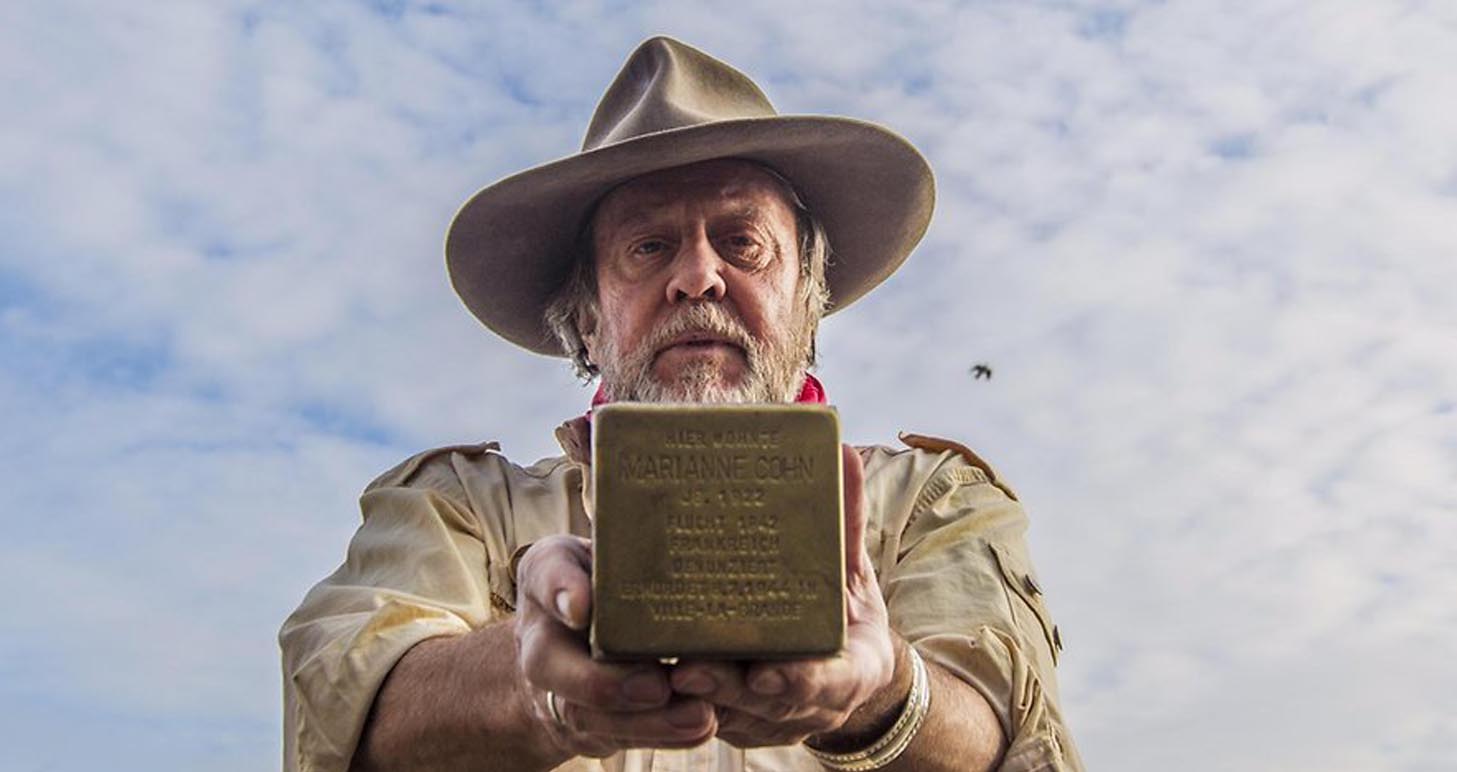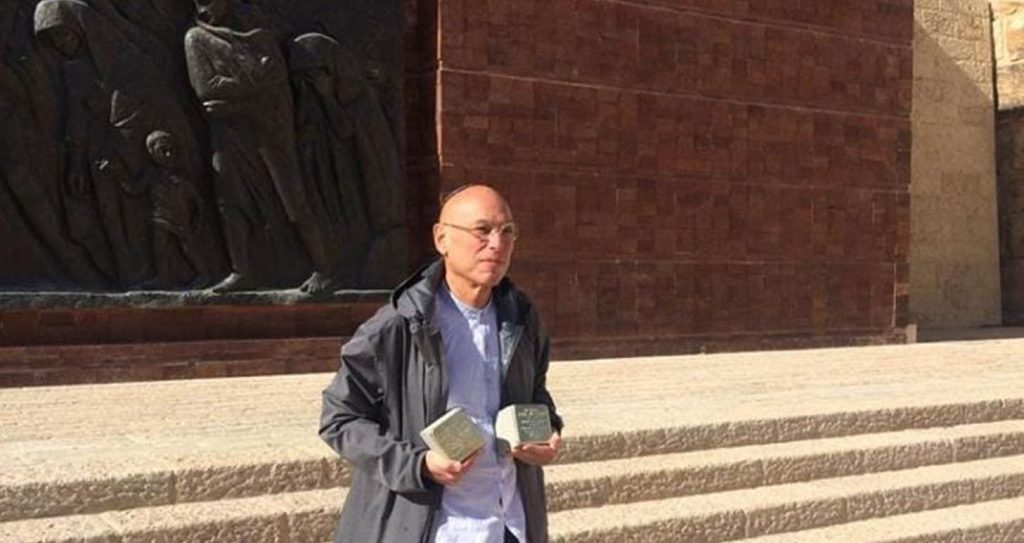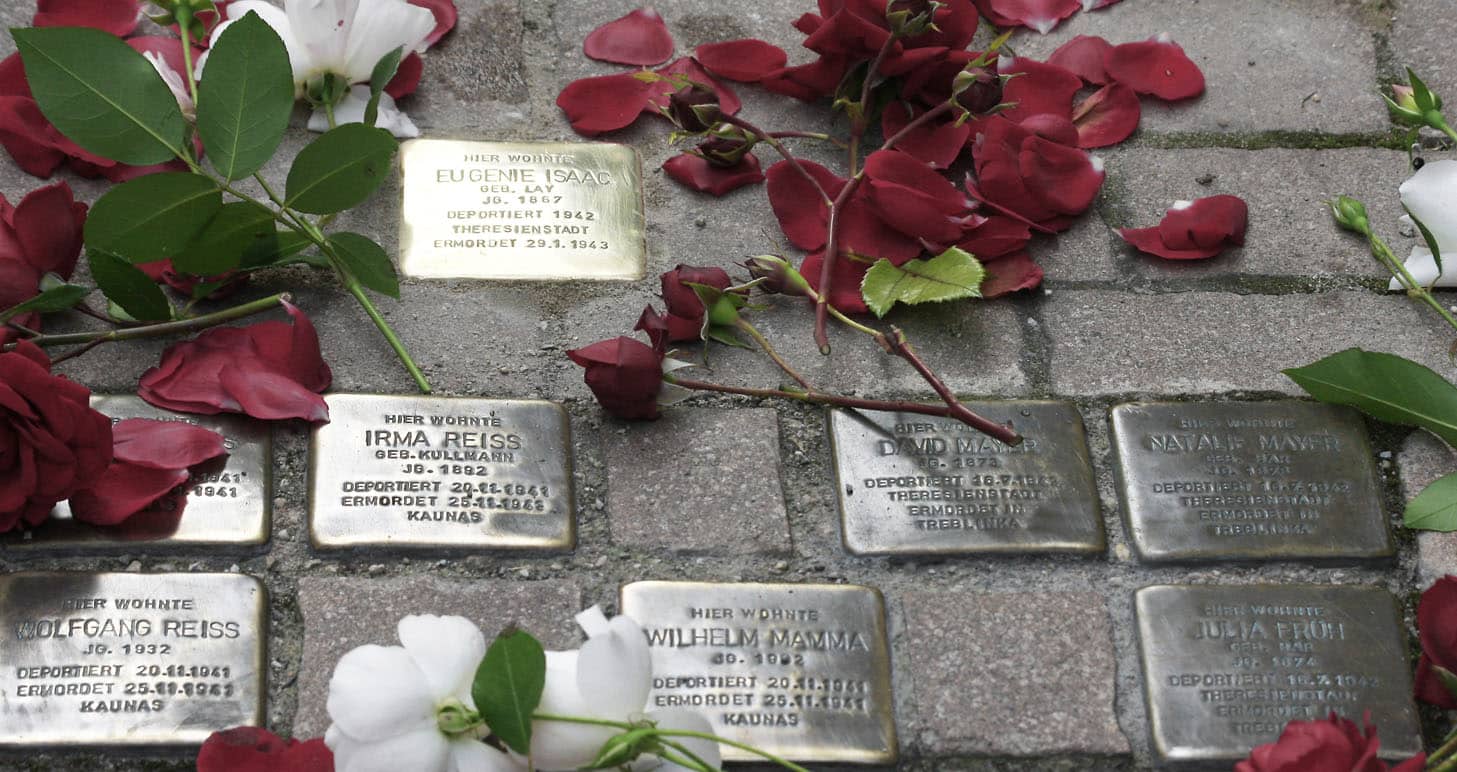100,000 Stolpersteine in 1,800 cities in 27 European countries– placed by 1,600 local organizations, each staffed by volunteers. It adds up to the largest, most inclusive and democratic project of commemoration that the world has ever seen.
Each Stolperstein (“stumbling block”) commemorates a victim of the Shoah – Jew, Sinti or Roma, homosexuals, members of the Resistance, persons persecuted for religious or political views or due to supposed disability (“euthanasia”).
Each Stolperstein is placed in the sidewalk in front of the building in which the victim lived before being dragged off by the Nazis to be persecuted and murdered.
Each is commissioned by persons who have dedicated themselves to commemorating their family members, friends, neighbors.
Each Stolperstein is manufactured by hand and installed in the sidewalk by Gunter Demnig, the Cologne-based artist who launched this movement in 1994, and by the locally-based organizations.
Each Stolperstein thus enables passersby to get to know and commemorate one of the 9 million Jews killed and persecuted in the Holocaust.
The Stolpersteine thus constitute “the palpable atlas of Jewish life and suffering” – in the words of Dr. Galit Noga-Bonai, professor of religious art at Jerusalem’s



